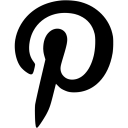When it comes to losing fat, I
am sure we can all agree on one thing. And that is, that nutrition can be very
confusing. Knowing
how to monitor food intake is key to manipulating your body composition long
term.
In order to get results, some degree of tracking is going to be necessary. Whether its counting calories, counting macros, tracking hand portions, or intuitive eating. Put simply, all these approaches work but the real question is what is going to work best for you.
Regardless of the method you choose, adopting a flexible dieting approach means you can include all the foods you would normally exclude when you are ‘trying to be healthy’ or ‘dieting’. The easiest way to adopt this approach is to count and track your macronutrients. This means you can include some chocolate, ice-cream, pasta, etc into your nutrition plan if you are meeting your macronutrient targets.
The idea is to make room for these treats to curb cravings and enjoy life whilst mostly consuming high nutrient quality foods.
Dietary Restraint vs Flexible Dieting
Dietary restraint involves weight loss plans for 8, 12, 16 + weeks that ban foods or food groups, place you on an overly restrictive diet, which eliminate socializing. I am sure all of you have done a plan like this before… but what happens is you have an event, you then indulge because ‘you deserve it’ then one night turns into a week or two or a month and you have gained all the weight you have lost, and often even more.
Who else has experienced this?
Scientific research has shown us that restrained eaters lack control of their eating behavior, they tend to overeat in social settings, and have an increased prevalence of eating disorders (especially binge eating disorder). This results in unsuccessful weight loss, patterns of yo-yo dieting, and overtime is more associated with weight gain.
Have you ever felt guilty for giving in to a craving? You can indulge in something small without binging and without feeling guilty and this ultimately is what sets you up for success physically and mentally.
There are no magic foods lists or meal plans
When I am training my clients I do not believe in ‘good’ or ‘bad’ foods. I do believe in ‘optimal’ and ‘sub-optimal’ foods for reaching your goals. However, my clients will include the foods they love into their plan as this creates sustainability and enjoyment during their new lifestyle.
I encourage my clients (and follow myself) that your foods should primarily come from whole, nutritious sources with high micronutrient content. It is very important that you include plenty of meats, vegetables, fruits, and grains in your diet to avoid any nutrient deficiencies that could affect your results. Ensuring you are getting 25-30g fiber per day is vital for optimal gut health as well.
However, I do leave that 10-20% to eat what we like, enjoy your favorite foods, and keep the meal plan interesting. Which enables you to have a great relationship with food. This also allows you to relax when it comes to eating out. Without stressing about what you are going to eat if it will limit your results or feel any guilt or fear around eating out!
Flexible dieting is what allows my clients to eat what they want and still get results.









Now this was quite the blog about fitness. If someone is having any doubt regarding dietary restraint and dieting then they should probably read this blog to get a bit more knowledge. Fitness in today’s world is a necessity and therefore we must always choose our fitness considerably. Visit: Online Fitness Program
ReplyDelete